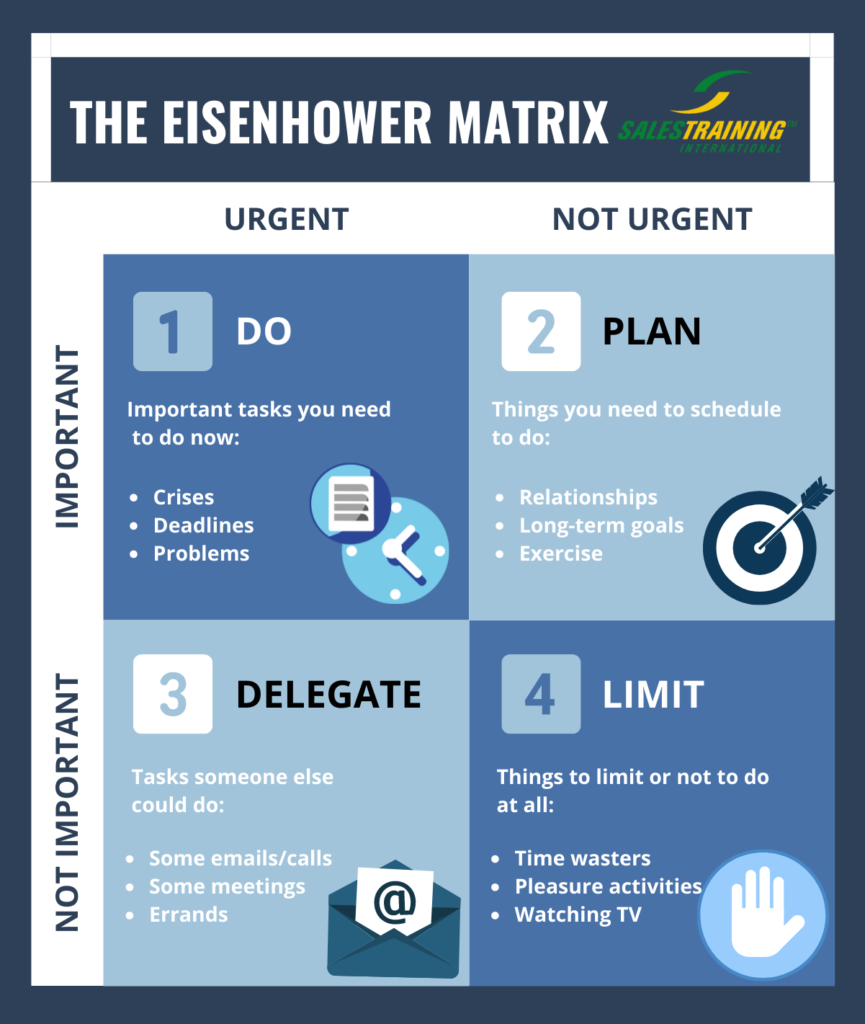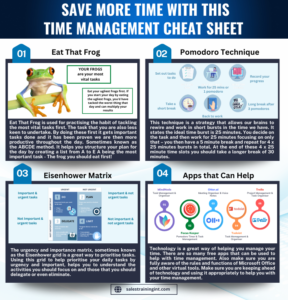Balancing deadlines, projects, and unexpected requests is a challenge faced by most professionals. Choosing what to focus on can often feel overwhelming, particularly when everything seems urgent.
The Eisenhower Urgency and Importance Matrix provides a clear framework to decide what truly deserves your attention. It isn’t just a theory, it’s a tool that can be applied immediately in daily work to improve productivity and reduce stress.
In this blog, we will walk through how the model works, how to apply it, and why structured training makes a lasting difference.

What Is The Eisenhower Urgency And Importance Matrix?
The Eisenhower matrix, sometimes called the Eisenhower box or the urgent important matrix, is a decision making tool that helps people sort tasks by urgency and importance. The model is linked to Dwight D Eisenhower, a world war ii leader and the 34th president of the United States, serving from 1953 to 1961.
The framework was later highlighted in Stephen Covey’s book ‘The 7 Habits Of Highly Effective People’, where it became a recognised method of thinking about urgent and important tasks.
The principle is straightforward. Every task falls into one of four categories:
- Urgent and important
- Important but not urgent
- Urgent but not important
- Neither urgent nor important
By placing tasks into these quadrants, you can see what requires immediate attention, what needs longer term planning, what can be delegated, and what should be removed from your list entirely.
Understanding The Four Quadrants
1. Urgent And Important
These are the tasks that cannot be avoided and need immediate action. They’re often problems that must be resolved quickly. Examples include meeting deadlines, urgent client requests or unexpected emergencies. Because they demand attention, these tasks should be dealt with first.
2. Important But Not Urgent
This quadrant contains the activities that make the biggest difference to long term goals but doesn’t require immediate completion. Examples include planning, training and relationship building. These tasks are often neglected as they don’t press for attention, but they’re the ones that deliver the greatest benefits if prioritised consistently.
3. Urgent But Not Important
Tasks in this quadrant create pressure but don’t necessarily contribute to long term success. They’re often interruptions such as phone calls, emails, or meetings that could be handled by someone else. The best approach is to delegate these tasks where possible so you can stay focused on higher value work.
4. Neither Urgent Nor Important
These are distractions that waste time without contributing results. Examples include scrolling through social media, watching tv or unnecessary admin tasks. The aim is to remove them altogether to free up time and mental energy.
How To Apply The Eisenhower Matrix At Work
Understanding the model is only the first step. To benefit from it, you need to apply it to daily work. This process is simple but effective:
- Write down all the tasks you need to complete.
- Place each one into the correct quadrant of the matrix.
- Deal with urgent and important tasks first.
- Schedule time for important but not urgent tasks to protect them from being overlooked.
- Delegate urgent but not important tasks where possible.
- Eliminate tasks that are neither urgent nor important.
By doing this regularly, you create a habit of prioritising tasks by urgency and importance rather than reacting to whatever feels most pressing in the moment.
Practical Examples Of The Matrix In Action
Applying the Eisenhower matrix becomes much clearer when you see it in real work situations. The following examples show how professionals and teams can prioritise tasks effectively, balancing urgent demands with longer term objectives.
- A sales professional with a proposal deadline (urgent and important) schedules it first, while also blocking time later in the week to work on prospecting (important but not urgent).
- A manager receiving a flood of emails (urgent but not important) delegates responses to a team member, keeping their own focus on preparing a strategy plan (important but not urgent).
- A team leader notices time being wasted on unnecessary reporting (neither urgent nor important) and decides to remove it from the workflow entirely.
These examples show how the model can be applied to real workplace challenges. Highlighting that it’s not about working harder, it’s about working smarter.
Why The Eisenhower Matrix Works
The strength of the Eisenhower matrix lies in its simplicity. It removes the stress of decision making by giving you a structure for sorting through tasks. Instead of reacting, you can step back and evaluate what deserves your time. This leads to clearer focus, improved productivity, and a stronger balance between urgent demands and long term goals.
Stephen Covey emphasised this in his book, ‘The 7 Habits Of Highly Effective People’, where the habit of “putting first things first” is built directly on this model. By prioritising important but not urgent tasks, professionals avoid last minute crises and invest more in the activities that drive results.
The Benefits Of Structured Training
Many professionals understand the theory of prioritising but struggle to apply it under pressure. Structured training creates accountability, builds habits, and provides the support needed to embed tools like the Eisenhower matrix into daily work.
The benefits include:
- Higher productivity across teams
- Reduced overwhelm from competing demands
- Stronger focus on long term goals
- Better decision making under pressure
With expert guidance, teams can turn the urgent important matrix from a concept into daily practice that transforms performance.

Bringing Prioritisation Into Practice
The Eisenhower urgency and importance matrix is more than a simple model. It’s a framework for making smarter choices about how to spend your time and energy.
By understanding the difference between urgent and important, and by applying the quadrants consistently, professionals can take control of their workloads and achieve better results.
At Sales Training International, we help organisations put this into practice with customised sales training, time management, and productivity programmes that deliver measurable improvements. Whether you’re a manager looking to support your team, a sales professional aiming to improve performance, or a business leader seeking long term growth, structured training can make all the difference.
Contact us today on 01704 89325 or email us at info@salestraininginternational.com to learn how our adaptable time management programmes can help you and your team effectively. And don’t miss our YouTube video on the Eisenhower Urgency & Importance Matrix below!























































